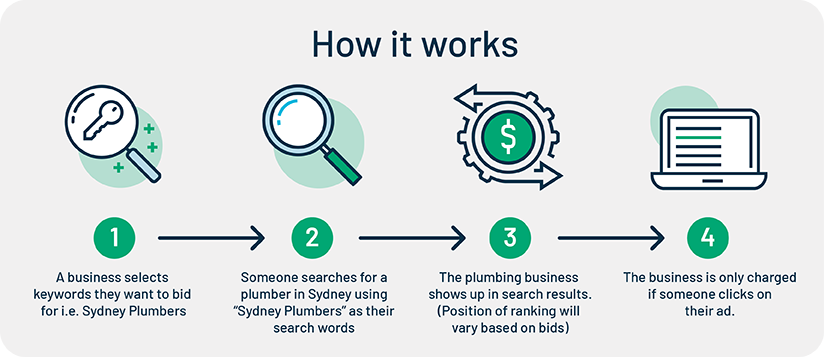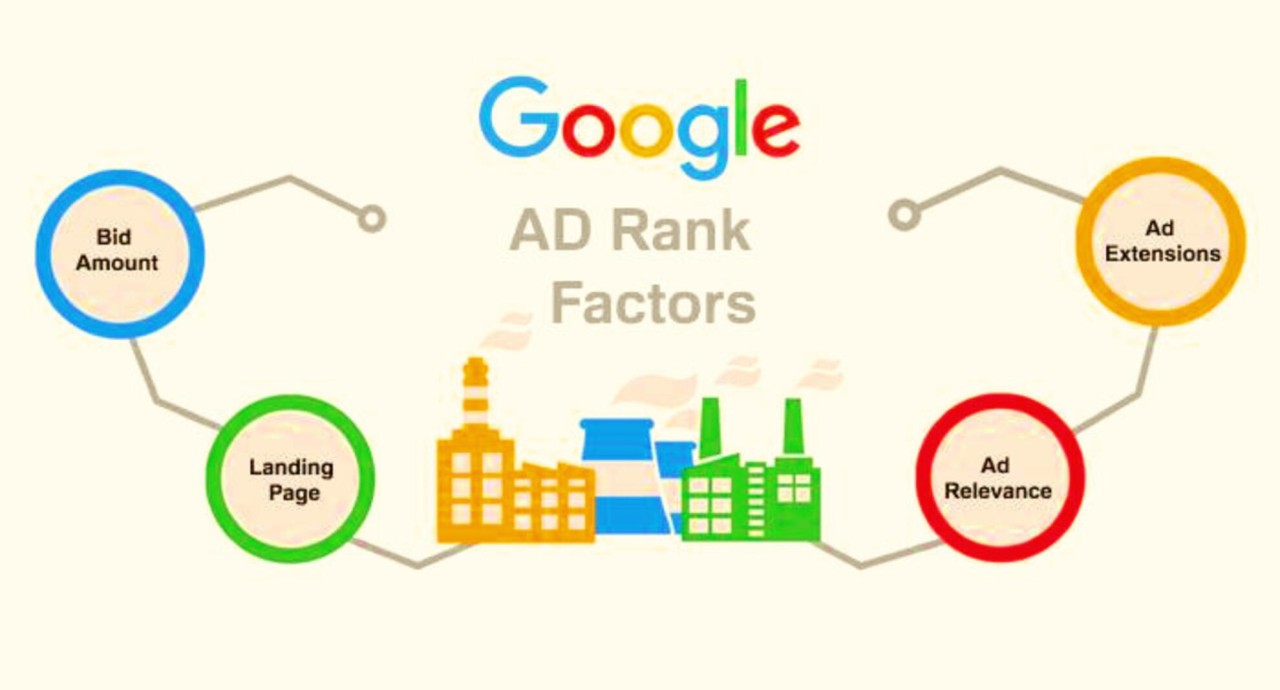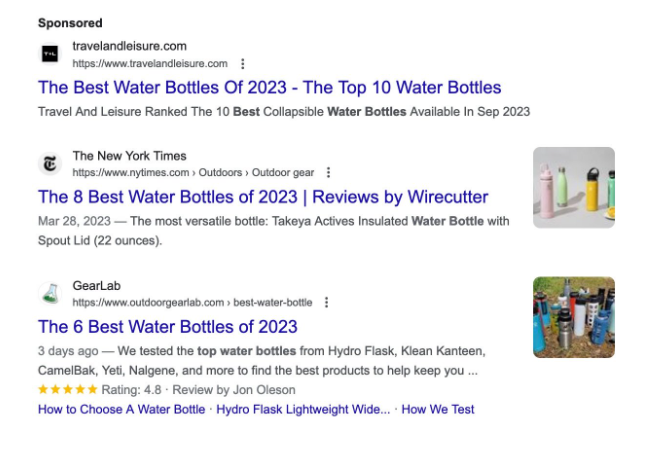While you may view Google Ads as a straightforward way to promote your business, the reality is that the process is far more complex. You see, it’s not just about bidding on keywords and hoping for the best – Google’s algorithm considers a multitude of factors, including ad relevance, landing page quality, and user experience. But How Do Google Ads Work? You’re about to find out what sets the highest bidder apart from the top spot, and what role you play in determining the success of your Google Ads campaigns.
Key Takeaways
- Google Ads work through a real-time auction process that determines ad visibility and ranking on search results pages.
- Ad relevance and landing page quality significantly impact ad position, along with bid amount, in the Google Ads auction process.
- The Ad Rank formula, including bid amount and ad relevance metrics, determines ad position and ad visibility boost.
- Ad targeting options, such as location, interest, and demographics, allow advertisers to reach the right audience for their business.
- Google Ads uses a cost-per-click pricing model, with bidding strategies and Ad Quality Score influencing the cost and performance of ads.
Understanding Google Ads Auction

When you create a Google Ad, it enters an ad auction, where it competes against other ads from advertisers targeting the same keywords.
The ad auction is a real-time process that determines the ad’s visibility and ranking on the search results page. One common misconception about the ad auction is that the highest bidder always wins the top spot.
However, this is one of the many ad auction myths that don’t hold true. In reality, the ad auction takes into account several factors, including the ad’s relevance, landing page quality, and user experience.
Google also uses a second-price auction model, where you pay the minimum amount required to outrank the next highest bidder.
To help you navigate the ad auction process, Google provides bid simulator tools. These tools allow you to simulate different bid scenarios and see how changes in your bids might impact your ad’s performance.
Ad Rank and Position
When you create a Google Ad, you want it to appear in a prominent position to increase visibility and attract more clicks.
To determine the ad position, Google considers several factors that contribute to your ad’s rank, including bid amount, ad relevance, and landing page quality.
Understanding these factors and how they interact in the ad rank formula will help you optimize your ad’s position and improve its performance in the auction-time process.
Ad Position Factors
Determining your ad’s position in Google Ads relies heavily on a combination of factors, including your bid amount, ad relevance, and landing page quality.
These factors play a significant role in the ad auction process, which ultimately decides the position of your ad on the search engine results page (SERP). As you participate in the ad auction, you’ll face stiff competition for the limited ad space available.
The level of ad space competition varies greatly depending on the search query, industry, and target audience, making it essential to keep a close eye on your competition.
In the ever-changing search engine landscape, it’s crucial to stay adaptable and adjust your ad strategy accordingly.
Factors such as ad relevance and landing page quality are also essential in determining your ad’s position. Google’s algorithm will assess the relevance of your ad to the search query and the quality of your landing page to ensure that users have a seamless experience.
Ad Rank Formula
In Google Ads, your ad’s position on the search engine results page (SERP) is calculated using the Ad Rank formula, which is a critical component of the ad auction process.
The Ad Rank formula is a complex algorithm that takes into account several factors, including your bid amount, ad relevance metrics, and the expected impact of ad extensions.
Ad relevance metrics are calculated based on factors like ad copy relevance, landing page relevance, and keyword relevance.
The Ad Rank formula helps determine not only your ad’s position but also its Ad visibility boost.
Ad visibility boost is an estimate of how much more visible your ad will be compared to the average ad in the same auction.
A higher Ad Rank typically results in a higher ad position and more Ad visibility boost.
Auction Time Process
At the heart of the Google Ads auction process lies a rapid-fire sequence of events that unfolds every time a user submits a search query.
This process determines the Ad Rank and position of your ad on the search engine results page (SERP). You’re likely wondering how it all works.
Auction dynamics play a crucial role in determining the outcome of the auction.
When you participate in the Google Ads auction, you’re engaged in real-time bidding with other advertisers.
Here’s what happens during the auction:
- Ad retrieval: Google’s algorithm quickly retrieves a list of ads that match the search query.
- Ad ranking: The algorithm then ranks these ads based on their Ad Rank, which is calculated using the Ad Rank formula discussed earlier.
- Ad positioning: Finally, the algorithm determines the position of each ad on the SERP based on their Ad Rank.
Understanding the auction time process can help you make informed decisions about your Google Ads campaigns and optimize your performance in the auction.
Ad Targeting Options
You have a wide range of ad targeting options at your disposal when using Google Ads.
These options enable you to reach the right audience for your business, increasing the effectiveness of your ad campaigns.
Location targeting is one of the primary options available to you.
You can target users based on their geographical location, either by targeting specific cities, countries, or regions.
This allows you to tailor your ad messaging to the specific needs of your target audience.
In addition to location targeting, Google Ads also offers Interest targeting.
This allows you to target users based on their interests, which can be inferred from their browsing behavior, search history, or other data.
By targeting users with interests that align with your business, you can increase the likelihood of converting them into customers.
Other ad targeting options, such as demographics, languages, and devices, can also be used to further refine your targeting.
By combining these targeting options, you can create highly targeted ad campaigns that deliver strong results for your business.
Keyword Match Types
When you set up your Google Ads campaigns, you’ll need to choose the right keyword match types to target your desired audience.
You’ll have two primary options: Exact Match keywords, which target searches that exactly match your specified keyword, and Broad Match options, which allow for variations in search queries.
Understanding the differences between these match types is crucial to optimizing your ad performance and achieving your desired outcomes.
Exact Match Keywords
While creating your Google Ads campaigns, selecting the right keyword match types is crucial for targeting the desired audience.
Exact Match Keywords are one of the most precise match types, allowing you to target users who search for the exact phrase you’ve chosen.
This match type provides you with exact targeting, ensuring that your ads appear only when users search for the exact keyword phrase.
- Keyword specificity: Exact Match Keywords require the search query to match the target keyword exactly, without any additional words or variations.
- Phrase variations aren’t included: Unlike other match types, Exact Match Keywords don’t include phrase variations, such as different word orders or synonyms.
- Higher conversion rates: Due to the precise targeting, Exact Match Keywords often result in higher conversion rates, as users are more likely to be searching for exactly what your ad is offering.
Using Exact Match Keywords can be an effective way to target specific search queries and increase the relevance of your ads.
Broad Match Options
Broad Match Options offer more flexibility than Exact Match Keywords, allowing your ads to reach a wider audience with related search queries.
This match type is ideal for you if you have a broad set of keywords that are relevant to your target audience. When you use Broad Match, your ads can show for searches that include your keywords, even if they’re not exact matches.
For example, if you use the broad keyword “summer shoes,” your ads can show for searches like “shoes for summer” or “summer sandals.”
To refine your targeting, you can use Phrase negatives with Broad Match. Phrase negatives allow you to exclude specific phrases from your targeting, ensuring that your ads only show for relevant searches.
For instance, if you’re targeting “summer shoes” but don’t want your ads to show for “winter shoes,” you can add “winter shoes” as a phrase negative.
Broad Match Options can help you increase your ad’s visibility and reach a larger audience. However, keep in mind that your ads may show for less relevant searches, which can impact your ad’s performance and ROI.
Ad Group Structure
Your Google Ads campaigns are organized into ad groups, which serve as containers for related ads and keywords.
This structure helps you manage your ads more efficiently and target specific audiences. A well-planned ad group organization is crucial to a successful Google Ads campaign.
When creating an ad group strategy, consider the following key factors:
- Related keywords: Group keywords that are closely related to each other, such as different variations of a product name or service.
- Ad relevance: Ensure that the ads within an ad group are relevant to the keywords and landing pages, providing a cohesive user experience.
- Campaign goals: Align your ad groups with specific campaign goals, such as conversions or brand awareness, to optimize performance.
A logical ad group structure allows you to easily manage and optimize your campaigns.
It also enables Google’s algorithm to better understand your ads and match them with relevant search queries.
Cost Per Click Pricing
Organizing your ad groups effectively sets the stage for optimizing your Google Ads campaigns.
When you’re bidding on keywords, you’re essentially competing with other advertisers for the same ad space. Google Ads uses a cost-per-click (CPC) pricing model, where you pay each time a user clicks on your ad.
The CPC is determined by a combination of factors, including your bidding strategy, ad position, and the relevance of your ad to the search query.
Your bidding strategy plays a crucial role in determining your CPC. You can choose from various bidding strategies, such as cost-per-click (CPC) or cost-per-conversion (CPA).
CPC bidding involves setting a maximum bid for each ad group or keyword, while CPA bidding involves setting a target cost per conversion.
Be cautious of click inflation, where bidding strategies drive up costs without necessarily improving ad performance.
By choosing the right bidding strategy and optimizing your ad groups, you can minimize click inflation and maximize your return on investment.
Monitoring and adjusting your bidding strategy regularly is essential to achieving optimal CPC pricing and campaign performance.
Ad Quality Score Factors

Three key components make up your Ad Quality Score in Google Ads: expected click-through rate, ad relevance, and landing page experience.
These factors help Google determine the relevance and usefulness of your ads, and in turn, affect your ad’s position and cost.
To understand how Ad Quality Score works, let’s break down its components:
1. Expected click-through rate (CTR): This is the likelihood that users will click on your ad when it’s displayed.
Google uses historical data to estimate your ad’s CTR based on its content and targeting.
2. Ad relevance: This refers to how well your ad matches the user’s search query.
If your ad is highly relevant to the user’s search, it’s more likely to receive a high Ad Quality Score.
3. Landing page experience: This is the quality and relevance of the webpage that users are directed to after clicking on your ad.
Google assesses the landing page’s content, navigation, and overall user experience to determine its relevance to your ad.
Understanding these Ad Quality Score factors can help you optimize your ads and improve their performance.
Ad Extensions and Formats

Google Ads offers a range of ad extensions and formats that can help boost your ad’s visibility and performance.
You can choose from various options, such as Sitelinks, Callouts, and Call Extensions, to enhance your ad’s appearance and provide users with more information about your business.
Image extensions are another option, which allows you to add images to your ads, making them more visually appealing and increasing their chances of standing out.
Sitelink benefits include directing users to specific pages on your website, such as product pages or promotional offers, and providing users with more options to engage with your business.
You can also use Sitelinks to promote special offers, events, or new products, which can increase user engagement and conversion rates.
Ad formats, such as Expanded Text Ads and Responsive Search Ads, also play a crucial role in improving your ad’s performance.
These formats allow you to create more flexible and dynamic ads that can adapt to different devices and screen sizes.
Campaign Budget Allocation
Your Google Ads campaign’s success relies heavily on allocating your budget effectively.
To maximize your ROI, you need to ensure that your budget is allocated in a way that aligns with your goals and objectives.
Google Ads allows you to set a daily budget for your campaigns, and it’s essential to allocate your budget across different campaigns and ad groups to achieve optimal performance.
When allocating your budget, you need to consider the following:
- Campaign-level budget allocation: Set a daily budget for each campaign, and Google Ads will allocate the spend across ad groups and keywords within that campaign.
- Ad group-level budget allocation: Allocate a specific budget to each ad group within a campaign, allowing for more granular control over spend.
- Keyword-level budget allocation: Set a specific budget for each keyword, enabling you to optimize spend for high-performing keywords.
FAQs: How Do Google Ads Work?
Can I Run Google Ads Without a Website?
You can run Google Ads without a website by using a landing page or sending users to social media profiles, but you’ll need a verified landing page to ensure ad relevance and a smooth user experience.
How Long Does It Take for Ads to Go Live?
Time waits for no ad, but you’ll wait for approval. When you submit your ads, Google’s Ad approval process kicks in. Expect an Ad review timeline of 1-3 days, although it can take up to a week.
Can I Use Google Ads for Non-Profit Organizations?
You can leverage Google Ads for Charity promotions and Donation drives, as it allows non-profit organizations to promote their causes and reach a wider audience, with options for sponsored content and targeted ads.
Is It Possible to Advertise on Google Maps?
You’re lost without the right advertising strategy. You can advertise on Google Maps using map advertisements, leveraging location targeting to reach users searching for nearby businesses or locations, increasing your local online visibility.
Can I Target Specific Job Titles in Google Ads?
You can target specific job titles in Google Ads using job function targeting, which leverages industry insights to help you reach users with specific roles, increasing ad relevance and conversion potential for your campaigns.
Conclusion
You now have a better understanding of how Google Ads work, from the auction process to ad targeting options and cost per click pricing. With Google Ads, you can reach a vast audience, as 63,000 searches are made on Google every second. To maximize your ad visibility, focus on optimizing your Ad Rank by improving ad relevance, landing page quality, and user experience. Effective campaign management will help you achieve your advertising goals and drive conversions.
